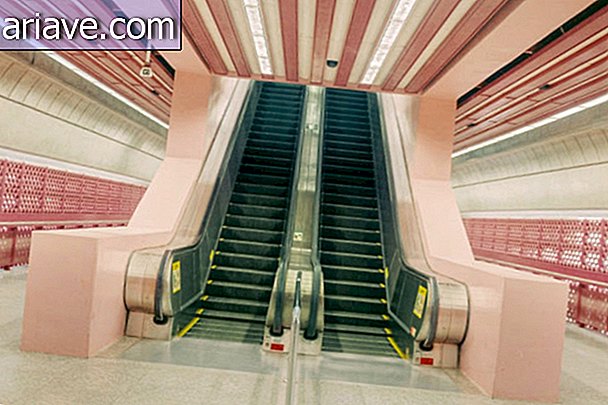Kowloon City: Learn the history of one of the strangest cities in the world
You may recall that the city of Kowloon has already been cited here in MegaCurioso on a list of the 5 strangest cities to live in the world. Considered one of the most populated places on the planet, with 50, 000 inhabitants living in a small, crowded area, the walled city of Kowloon, China, has an interesting history.
Seeking to better understand the lives of the people who lived there, Canadian photographer Greg Girard - in collaboration with Ian Lamboth - spent 5 years there to become familiar with the reality of the Chinese city that was to be demolished years later.
The photographer's eye sought to capture a little of the condition of the 33, 000 families living in the more than 300 interconnected buildings that were built without the help of engineers or architects next to Kai Tak Airport.
“I spent 5 years photographing and getting acquainted with the city, its inhabitants and its organization. Looking so anarchistic and committed on its surface, it actually worked broadly, and worked very well, ”says the photographer.
A little of history
During the Song Dynasty, which ruled China from 960 to 1279, the region served as a military fortress whose main objectives were to prevent pirate attacks and to manage salt production - all before the territory was ruled by the British.
During the period of the Japanese occupation in Hong Kong - which took place during World War II - part of the city was demolished for use in the construction of the airport. As Japan gave up, the population increased dramatically with the increasing number of invasions. It was not long before criminals and drug users also occupied the city under the Chinese Triad government until 1974.
According to The Daily Mail, in the early 1980s, Kowloon became known for its brothels, casinos, and drug distribution points such as cocaine and opium. Other features that contributed to the city's fame were the establishments that sold dog meat and the dentists who attended without any regulation.
Diplomatic problems
Shortly thereafter, the city ended up triggering a diplomatic impasse between China and England, as neither government wanted to take responsibility for Kowloon, but both agreed that the city's problems were gaining intolerable proportions, even though rates crime rates have declined in recent years.
The quality of life and hygienic conditions in which people lived were far below the standards found in Hong Kong and then a plan of destruction of the city was initiated. Of course, many residents protested that they were happy under those conditions. But the government did not change its mind and spent $ 2.7 billion Hong Kong dollars (about $ 770 million) to evacuate the city between 1991 and 1992. The demolition of the city was completed in April 1994 and today. The site houses a park with some preserved buildings.
The other's look
Below are some of the images captured by photographer Greg Girard during the 5 years he lived in Kowloon. What is striking is the lack of natural lighting in the enclosed spaces, the dirt and clutter that reveal a little of the conditions in which these people lived.
1) Lights

2) Children

3) Airport

4) Roofs

5) Meat production

6) Ramen production

7) Coexistence

8) Factory

9) Fish and Pigs

10) Dirt












